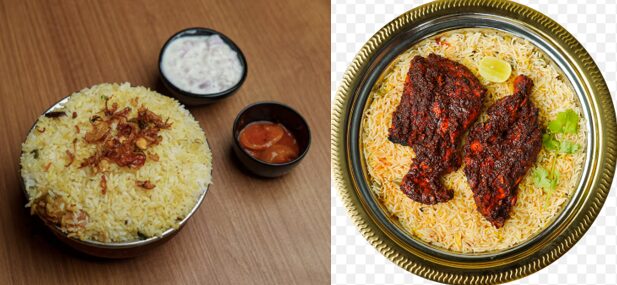Kozhikode, the heart of Malabar cuisine, has long been synonymous with the Kozhikode Biriyani a fragrant, subtly spiced dish of Kaima or Basmati rice, tender meat, and a masala that tells a story of local tradition. It’s the undisputed star of weddings, celebrations, and everyday satisfying meals. However, in recent years, a new contender has emerged from the Arabian peninsula to challenge the king: Mandi.
The Rise of Mandhi in Calicut
Mandi, a slow-cooked Arabic rice and meat dish, has seen a surge in popularity in Kozhikode and across Kerala over the past few years. New Mandi shops and restaurants continue to open, and the dish is often favored for its subtle flavors and unique preparation in which meat and rice are cooked together in a dug-out oven, letting the rice absorb the meat juices and aromatic spices. Mandi is traditionally served on a large platter for sharing, fostering a communal eating experience. This “group-friendly” option, often paired with unlimited rice, has made it a massive hit, especially among college students and groups looking for an economical and social meal. The novelty of a new, authentic (or semi-authentic) Arabian dish has given Mandi a trendy edge, with many restaurants specializing in various Mandi styles (like Al Faham Mandi, Peri Peri Mandi, Shawaya Mandi) popping up across the city. Popular Mandi spots in Kozhikode includes: Nahdi Mandi, Soofi Mandi etc.
Biriyani: The Enduring Classic
Despite the Mandi “revolution,” the notion of Biriyani being completely dethroned might be premature. The Kozhikode Biriyani is more than just food; it’s a cultural institution. Biriyani’s unique blend of spices, its aromatic rice, and its integral role in local cuisine and rituals ensure its longevity. Renowned local institutions like Paragon and Rahmath Hotel continue to draw huge crowds specifically for their legendary Biriyani. For many accustomed to the complexity of Indian spices, Mandi can be perceived as too “bland.” Biriyani’s rich, layered flavor profile provides a satisfaction that the milder Mandi often cannot replace, especially for grand occasions. Despite the Mandi “revolution,” the notion of Biriyani being completely dethroned might be premature. The Kozhikode Biriyani is more than just food; it’s a cultural institution. Biriyani’s unique blend of spices, its aromatic rice, and its integral role in local cuisine and rituals ensure its longevity. Renowned local institutions like Paragon and Rahmath Hotel continue to draw huge crowds specifically for their legendary Biriyani. For many accustomed to the complexity of Indian spices, Mandi can be perceived as too “bland.” Biriyani’s rich, layered flavor profile provides a satisfaction that the milder Mandi often cannot replace, especially for grand occasions.
The Verdict: Coexistence, Not Conquest
The current food scene in Kozhikode suggests a coexistence rather than a total takeover. Mandi has carved out a significant niche it’s the new go-to for a casual group dinner, a lighter option, or a taste of the Gulf. Biriyani, however, remains the cultural staple the mandatory, non-negotiable dish for major celebrations and the ultimate expression of Malabar hospitality. The two dishes are distinct, catering to different moods and occasions. While Mandi’s growing popularity is undeniable, the crown of the ultimate celebratory dish in Kozhikode still firmly rests with its cherished Biriyani.

